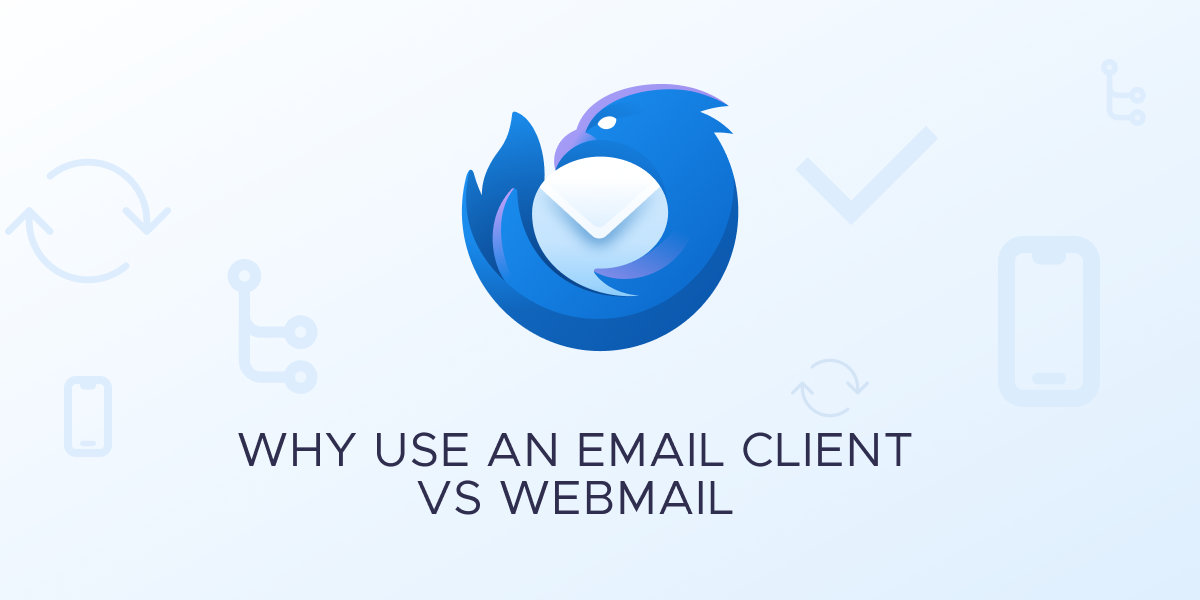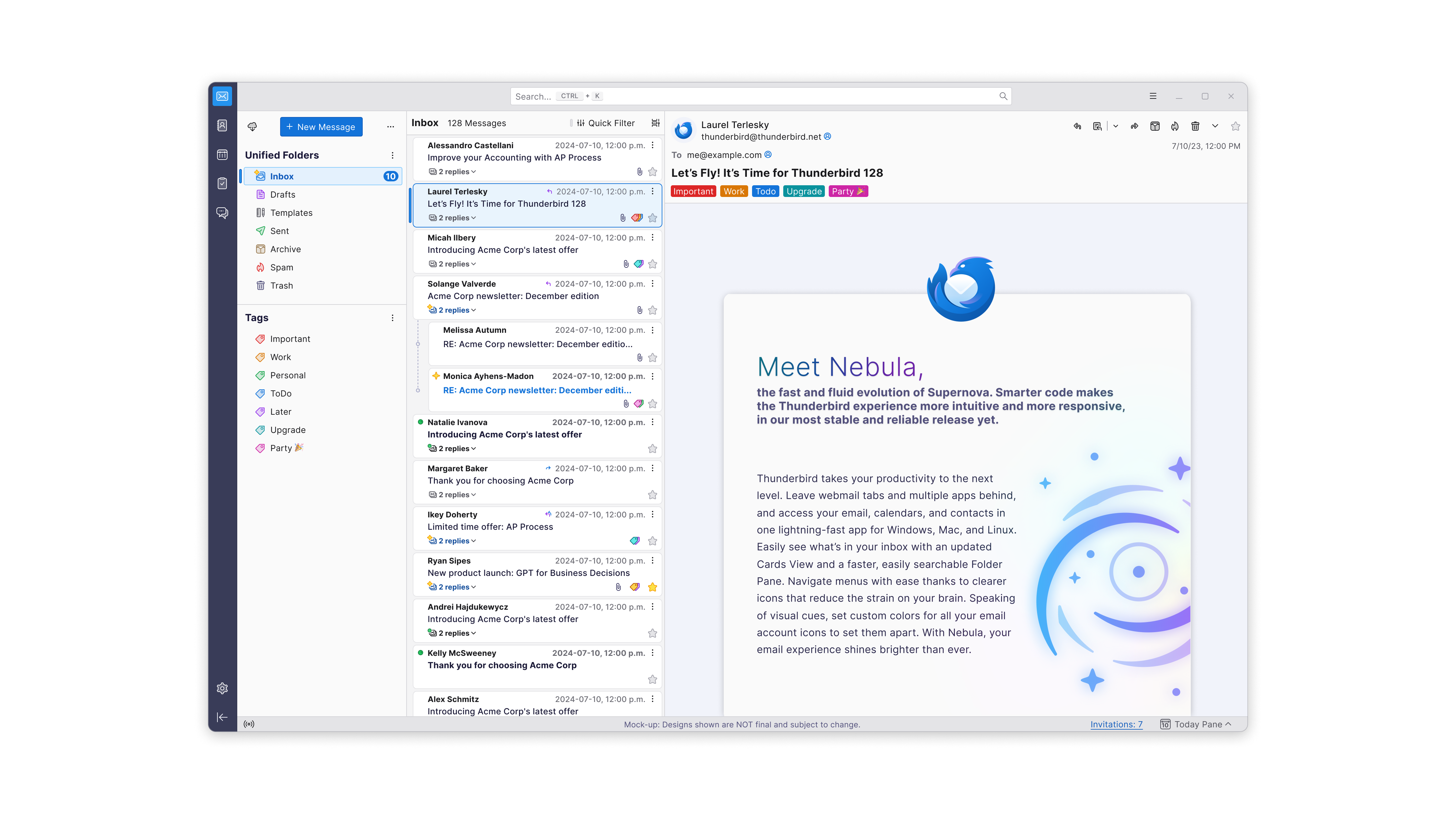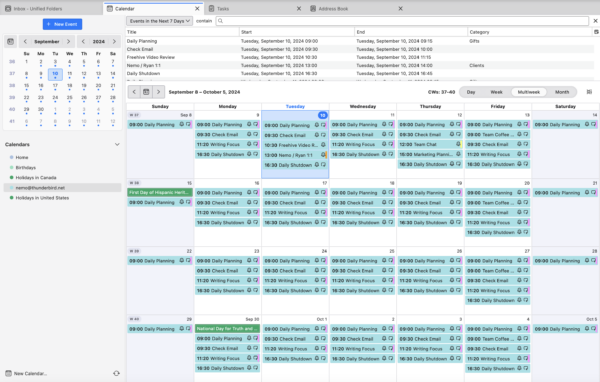
Why Use a Mail Client vs Webmail
Many of us Thunderbird users often forget just how convenient using a mail client can be. But as webmail has become more popular over the last decade, some new users might not know the difference between the two, and why you would want to swap your browser for a dedicated app.
In today’s digital world, email remains a cornerstone of personal and professional communication. Managing emails, however, can be a daunting task especially when you have multiple email accounts with multiple service providers to check and keep track of. Thankfully, decades ago someone invented the email client application. While web-based solutions have taken off in recent years, they can’t quite replace the need for managing emails in one dedicated place.
Let’s go back to the basics: What is the difference between an email service provider and an email client application? And more importantly, can we make a compelling case for why an email client like Thunderbird is not just relevant in today’s world, but essential in maintaining productivity and sanity in our fast-paced lives?
An email service provider (ESP) is a company that offers services for sending, receiving, and storing emails. Popular examples include Gmail, Yahoo Mail, Hotmail and Proton Mail. These services offer web-based interfaces, allowing users to access their emails from any device with an internet connection.
On the other hand, an email client application is software installed on your device that allows you to manage any or all of those email accounts in one dedicated app. Examples include Thunderbird, Microsoft Outlook, and Apple Mail. Email clients offer a unified platform to access multiple email accounts, calendars, tasks, and contacts, all in one place. They retrieve emails from your ESP using protocols like IMAP or POP3 and provide advanced features for organizing, searching, and composing emails.
Despite the convenience of web-based email services, email client applications play a huge role in enhancing productivity and efficiency. Webmail is a juggling game of switching tabs, logins, and sometimes wildly different interfaces. This fragmented approach can steal your time and your focus.
So, how can an email client help with all of that?
One Inbox – All Your Accounts
As already mentioned, an email client eliminates the need to switch between different browser tabs or sign in and out of accounts. Combine your Gmail, Yahoo, and other accounts so you can read, reply to, and search through the emails using a single application. For even greater convenience, you can opt for a unified inbox view, where emails from all your different accounts are combined into a single inbox.
Work Offline – Anywhere
Email clients store your emails locally on your device, so you can access and compose emails even without an internet connection. This is really useful when you’re travelling or in areas with poor connectivity. You can draft responses, organize your inbox, and synchronize your changes once you’re back online.

Enhanced Productivity
Email clients come packed with features designed to boost productivity. These include advanced search capabilities across multiple accounts, customizable filters and rules, as well as integration with calendar and task management tools. Features like email templates and delayed sending can streamline your workflow even more.
Care About Privacy?
Email clients offer enhanced security features, such as encryption and digital signatures, to protect your sensitive information. With local storage, you have more control over your data compared to relying solely on a web-based ESP.
No More Clutter and Distractions
Web-based email services often come with ads, sometimes disguised as emails, and other distractions. Email clients, on the other hand, provide a cleaner ad-free experience. It’s just easier to focus with a dedicated application just for email. Not having to reply on a browser for this purpose means less chance of getting sidetracked by latest news, social media, and random Google searches.
All Your Calendars in One Place
Last but not least, managing your calendar, or multiple calendars, is easier with an email client. You can sync calendars from various accounts, set reminders, and schedule meetings all in one place. This is particularly useful when handling calendar invites from different accounts, as it allows you to easily shift meetings between calendars or maintain one main calendar to avoid double booking.

So, if you’re not already using an email client, perhaps this post has given you a few good reasons to at least try it out. An email client can help you organize your busy digital life, keep all your email and calendar accounts in one place, and even draft emails during your next transatlantic flight with non-existent or questionable Wi-Fi.
And just as email itself has evolved over the past decades, so have email client applications. They’ll adapt to modern trends and get enhanced with the latest features and integrations to keep everyone organized and productive – in 2024 and beyond.
12 responses
David Ross wrote on
Monica Ayhens-Madon wrote on
Ufal Salman wrote on
Monica Ayhens-Madon wrote on
nicu wrote on
Monica Ayhens-Madon wrote on
nicu wrote on
Monica Ayhens-Madon wrote on
Corrado wrote on
Monica Ayhens-Madon wrote on
Gustav Pacl wrote on
Monica Ayhens-Madon wrote on
Comments are closed.